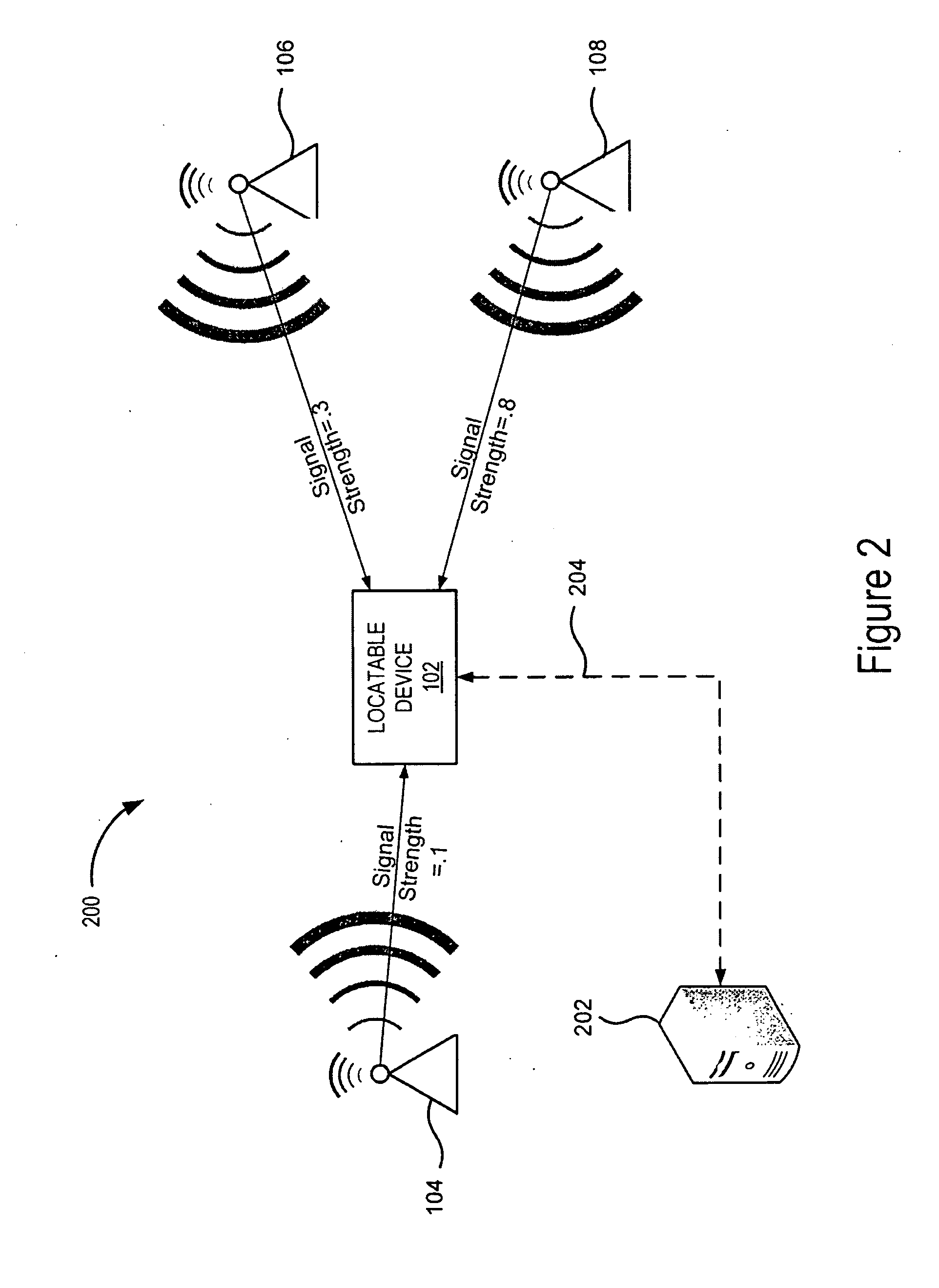Geographically self-labeling access points
a technology of geo-location and access points, applied in the field of geo-location systems, can solve the problems of gps devices typically needing a significant amount of time to acquire position signals, and the addition of global positioning systems to computing devices is difficult, and the effect of increasing the number of circuits
- Summary
- Abstract
- Description
- Claims
- Application Information
AI Technical Summary
Problems solved by technology
Method used
Image
Examples
example
[0081]Referring now to FIG. 9, one embodiment of a method for determining the location of the locatable device 102 will be described. The method begins by receiving 902 location information from a plurality of access points 104, 106 and 108. For example the location information can be a geographic code or a prefix and a geographic code. In one embodiment, the method receives location information from at least three access points. While the geographic information from one access points can be used to determine the general location, it will result in a number of possible locations. Next method determines the signal strength of the signal received from each access point 104, 106 and 108. Referring now also to FIG. 2, example signal strengths for each access point is shown. The method then computes 906 the geometric center, C, of the access points 104, 106 and 108. Next method normalizes 908 the signal strength received from each access point 104, 106 and 108. For example, the signal st...
PUM
 Login to View More
Login to View More Abstract
Description
Claims
Application Information
 Login to View More
Login to View More - R&D
- Intellectual Property
- Life Sciences
- Materials
- Tech Scout
- Unparalleled Data Quality
- Higher Quality Content
- 60% Fewer Hallucinations
Browse by: Latest US Patents, China's latest patents, Technical Efficacy Thesaurus, Application Domain, Technology Topic, Popular Technical Reports.
© 2025 PatSnap. All rights reserved.Legal|Privacy policy|Modern Slavery Act Transparency Statement|Sitemap|About US| Contact US: help@patsnap.com



